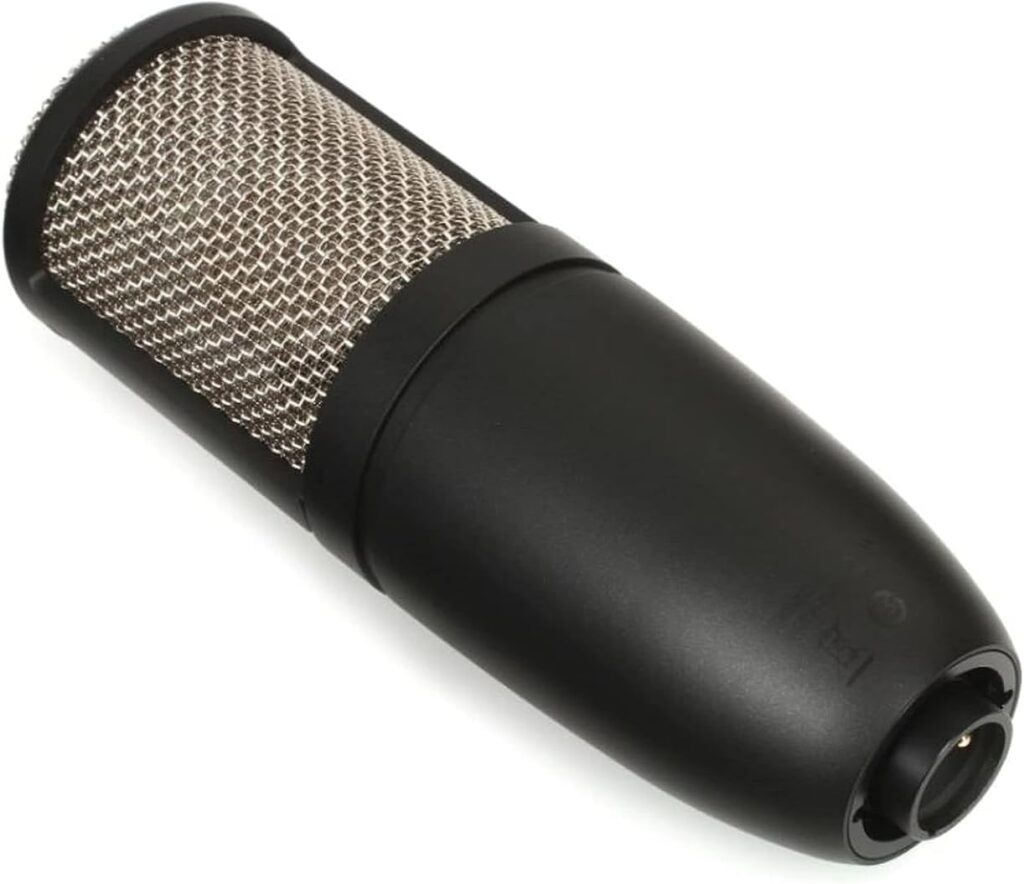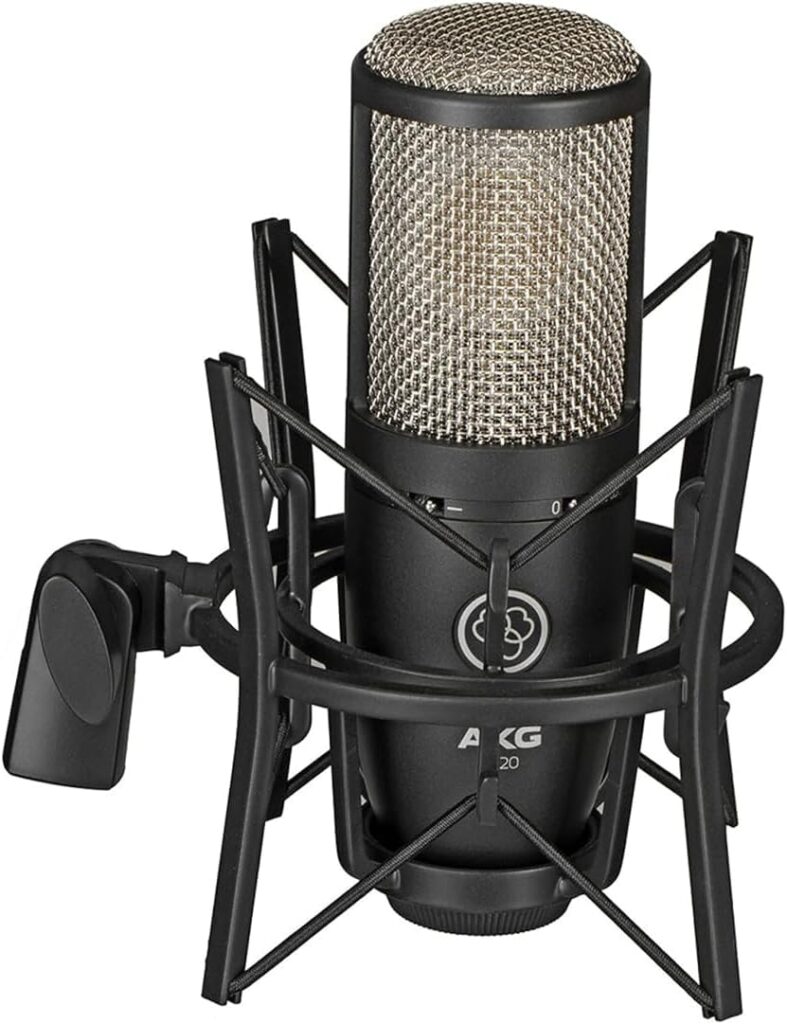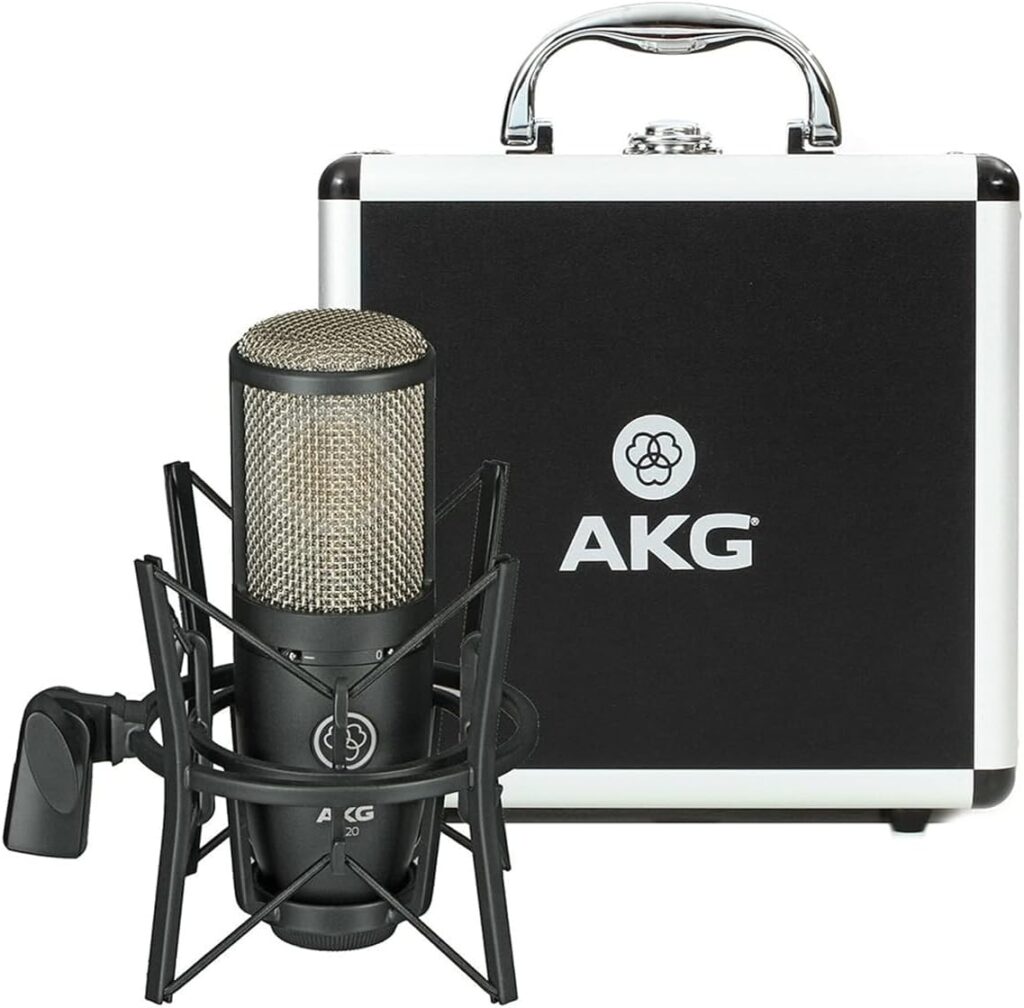AKG P220 Review
When it comes to recording audio, whether for music, podcasts, voiceovers, or streaming, the microphone you choose can make or break the quality of your output. Among the myriad options available, the AKG P220 stands out as a compelling choice for beginners and seasoned professionals alike. Priced in the budget-to-midrange category, this large-diaphragm condenser microphone promises professional-grade performance without breaking the bank. In this review, we’ll explore the AKG P220’s design, technical specifications, sound quality, practical applications, and how it stacks up against competitors. By the end, you’ll have a clear picture of whether this mic deserves a spot in your audio setup.
AKG P220 Review\
The AKG P220 is part of AKG’s Perception series, a lineup designed to bring high-quality recording tools to a broader audience. AKG, an Austrian company with a rich history dating back to 1947, has long been respected in the audio industry for its microphones and headphones. The P220 builds on this legacy, offering a blend of durability, versatility, and sound quality that appeals to home studio enthusiasts and small-budget professionals.
Released as an evolution of earlier Perception models, the P220 is marketed as a multi-purpose condenser microphone. It features a 1-inch large-diaphragm capsule, a switchable bass-cut filter, and a -20dB pad, making it adaptable to a variety of recording scenarios. With a cardioid polar pattern, it’s designed to capture sound primarily from the front while minimizing noise from the sides and rear—a must-have for focused vocal or instrument recordings.
Design and Build Quality
Straight out of the box, the AKG P220 impresses with its solid construction. The microphone sports a sleek, all-metal chassis finished in a matte black coating, giving it a professional yet understated look. Weighing approximately 530 grams (1.17 lbs), it feels substantial without being cumbersome, striking a balance that suggests durability without sacrificing portability.
The P220 comes packaged with a sturdy spider-style shock mount, which is a welcome inclusion at this price point. The shock mount effectively isolates the microphone from vibrations and handling noise, a critical feature for clean recordings. Also included is a padded metal carrying case, adding to the mic’s appeal for mobile recording setups or safe storage.
On the front of the microphone, you’ll find two switches: one for the bass-cut filter (set at 300 Hz with a 12 dB/octave slope) and another for the -20dB pad. These controls are recessed slightly to prevent accidental toggling, a thoughtful design choice. The XLR connector at the base ensures a secure connection to your audio interface or preamp, and the mic requires 48V phantom power to operate, which is standard for condenser microphones.
While the build quality is impressive for its class, it’s worth noting that the P220 doesn’t feel as luxurious as higher-end models from AKG or competitors like Neumann. That said, it’s more than robust enough to withstand regular use in a home or project studio.
Technical Specifications
To understand what the AKG P220 brings to the table, let’s break down its key specs:
- Capsule: 1-inch large-diaphragm, true condenser
- Polar Pattern: Cardioid
- Frequency Response: 20 Hz – 20 kHz
- Sensitivity: 20 mV/Pa (-34 dBV)
- Max SPL: 155 dB (with -20dB pad engaged)
- Equivalent Noise Level: 16 dB-A
- Bass-Cut Filter: 300 Hz, 12 dB/octave
- Pad: -20 dB
- Impedance: ≤ 200 ohms
- Power Requirement: 48V phantom power
- Dimensions: 165 mm (length) x 54 mm (diameter)
- Weight: 530 g
These specifications position the P220 as a versatile tool capable of handling a wide range of sound sources, from soft vocals to loud guitar amps. The high maximum SPL (sound pressure level) of 155 dB with the pad engaged is particularly noteworthy, making it suitable for capturing dynamic, high-volume sources without distortion.
Sound Quality
The heart of any microphone review lies in its sound quality, and the AKG P220 delivers a performance that punches above its weight. Its 1-inch diaphragm produces a warm, detailed sound with a slight presence boost in the mid-to-high frequencies (around 5-10 kHz). This characteristic lends a natural clarity to vocals, making it an excellent choice for singers, podcasters, and voiceover artists.
In testing, the P220 captures vocals with a smooth, full-bodied tone. The low end is well-represented without being overly boomy, thanks in part to the switchable bass-cut filter. Engaging the filter at 300 Hz helps tame excessive proximity effect (the bass boost that occurs when a source is very close to the mic), ensuring a balanced sound even in close-mic’d scenarios.
For instruments, the P220 shines as a jack-of-all-trades. When placed in front of an acoustic guitar, it picks up the nuances of fingerpicking and strumming with impressive detail, though it doesn’t quite match the airiness of higher-end condensers. On electric guitar cabinets, the -20dB pad proves its worth, allowing the mic to handle high SPLs without clipping. It’s also a decent option for drum overheads or room miking, though its cardioid pattern limits its ability to capture a wide stereo image compared to small-diaphragm condensers.
The self-noise level of 16 dB-A is respectable for this price range, meaning the mic remains quiet enough for most applications. However, in very soft or distant recordings, you might notice a faint hiss if your preamp isn’t top-tier. Pairing the P220 with a clean, high-gain preamp (like those found in Focusrite or Universal Audio interfaces) maximizes its potential.
Practical Applications
The AKG P220’s versatility makes it a Swiss Army knife for budget-conscious creators. Here are some of its standout use cases:
- Vocal Recording: Whether you’re a singer-songwriter or a podcaster, the P220 delivers clear, professional-sounding vocals. Its slight presence boost flatters most voices without sounding harsh.
- Acoustic Instruments: From guitars to pianos to violins, the P220 captures the warmth and detail of acoustic sources effectively.
- Amplified Sources: With the pad engaged, it handles loud sources like guitar amps or brass instruments with ease.
- Streaming and Content Creation: For Twitch streamers or YouTubers, the P220 offers a significant upgrade over USB mics, provided you have an audio interface.
- Home Studio All-Rounder: If you can only afford one mic, the P220’s adaptability makes it a solid choice for a variety of tasks.
That said, it’s not perfect for every situation. Its cardioid-only design limits its use in stereo recording setups, and it’s not the best choice for field recording due to its reliance on phantom power and lack of weather resistance.
Pros and Cons
Pros:
- Affordable price for a large-diaphragm condenser
- Warm, detailed sound with a flattering presence boost
- High max SPL with the -20dB pad
- Solid build quality and included shock mount
- Versatile for vocals and instruments
- Bass-cut filter for taming low-end rumble
Cons:
- Single cardioid pattern limits flexibility
- Self-noise slightly higher than premium condensers
- Not as airy or refined as higher-end mics
- Requires phantom power, limiting portability
Comparison to Competitors
To put the AKG P220 in context, let’s compare it to two popular alternatives in its price range: the Audio-Technica AT2035 and the Rode NT1-A.
- Audio-Technica AT2035: Priced similarly, the AT2035 offers a flatter frequency response and slightly lower self-noise (12 dB-A). It’s a bit more neutral than the P220, which might appeal to those seeking a transparent sound. However, the P220 edges out in max SPL (155 dB vs. 148 dB) and has a more pronounced midrange presence.
- Rode NT1-A: Often considered the gold standard in this category, the NT1-A boasts an ultra-low self-noise (5 dB-A) and a brighter, more open sound. It’s pricier than the P220, though, and lacks the same warmth in the low mids. The P220 holds its own as a budget-friendly alternative with a different sonic character.
Against these competitors, the P220 strikes a balance between cost, features, and sound quality. It’s not the quietest or most neutral mic, but its tonal character and durability make it a strong contender.
The Bottom Line
The AKG P220 is a testament to what modern audio engineering can achieve at an accessible price point. It’s not flawless—its self-noise and single polar pattern hold it back from true greatness—but it excels as a versatile, budget-friendly condenser. Its warm, detailed sound, robust build, and practical features make it a worthy investment for anyone serious about recording without a lavish budget.
If you’re a home studio owner, content creator, or musician looking for a dependable workhorse mic, the P220 deserves your attention. Pair it with a decent preamp and some basic acoustic treatment, and you’ll be amazed at the professional results it can deliver. While it won’t replace a Neumann U87 or a high-end AKG C414, it holds its own in the sub-$200 category and proves that quality audio doesn’t have to come with a luxury price tag.
In a crowded market, the AKG P220 stands tall as a reliable, affordable option that gets the job done—and then some. Whether you’re laying down your first vocal track or miking a guitar cab, this mic is ready to capture your sound with clarity and character.




